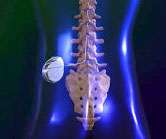Tone Management
Spasticity
Spasticity, a type of muscle stiffness, commonly occurs in cerebral palsy and may interfere with function, care and comfort. With spasticity, the faster a joint is moved, the tighter the muscle feels. Spasticity may be mild and only affect muscles during fast paced or strenuous activity. Moderate or severe spasticity can lead to muscle shortening (contracture) and restrict range of motion, interfering with everyday movements. In growing children, the abnormal pull of spastic muscles may result in bony deformities.
Our physicians work with other specialists including neurologists, neurosurgeons, and therapists to manage a patient’s spasticity. The goals of spasticity reduction are to increase movement, improve function or improve the ease of caring for a patient. Treatment may make movement more efficient leaving extra energy for participation in school, work and home activities. Depending on the severity of the spasticity and which muscles are affected, different treatments may be used.
Oral Medications, such as baclofen, may be helpful for patients with spasticity in many muscles that interferes with function, comfort or care. These medications are often the first choice in spasticity management as they are safe and usually well-tolerated; however, they are not effective in all patients. The most common side effect of these medications is drowsiness.
Botulinum Toxin, such as Botox ® and Dysport®, is injected directly into spastic muscles to weaken them by blocking transmission between the nerve and the muscle. It works best when spasticity is a problem in only a few muscles. Examples include injection into the calf to decrease toe walking or the groin muscles to decrease scissoring (crossing of the legs). It is used when full range of motion is present and is not effective when the joint cannot move due to a shortened muscle (contracture). The effects of botulinum toxin injections usually last four to six months and treatment needs to be repeated in many patients. In patients who walk, the use of botulinum toxin should be limited as overuse may lead to weakness.

An Intrathecal Baclofen Pump delivers baclofen, one of the most common spasticity medications, directly into the fluid around the spinal cord. A small battery-operated pump is placed under the skin on the person’s trunk during surgery. The pump is connected to a small tube that delivers the baclofen. This way of delivering baclofen decreases spasticity throughout the body, and the dosage may be adjusted as needed. Intrathecal baclofen pumps work best for children and adults with CP who have spasticity in many muscles. The pump needs to be refilled regularly at clinic visits. One advantage of the pump is the decreased risk of side effects, such as drowsiness.
Selective Dorsal Rhizotomy, or SDR, is a neurosurgical procedure where a portion of the sensory nerves entering the spinal cord are cut to eliminate spastic reflexes. This procedure works best in younger children who can walk, but have a lot of spasticity in their legs. Because the surgery may uncover weakness that was hidden by the spasticity, it is important that the child demonstrate good strength and the ability to control muscles before surgery. Intensive physical therapy is required after the procedure to improve strength and accommodate to reduced spasticity. SDR can also be helpful for individuals who don’t walk, but have severe spasticity that interferes with positioning, comfort and care.
Dystonia and Choreo-Athetosis
While a majority of people with cerebral palsy have spasticity, some patients have involuntary movement disorders including dystonia and choreo-athetosis. Muscle stiffness can be associated with dystonia. Not all treatments designed to reduce spasticity are effective in addressing these movement disorders; it is important that the type of muscle stiffness be evaluated by an experienced team.
Oral medications may be prescribed to decrease the effects of these movement disorders.
Deep brain stimulation, or DBS, has been used for some people with cerebral palsy who have dystonia or choreo-athetosis. DBS is often described as a “brain pacemaker”, as it uses electrodes that are strategically placed in the brain to ease the symptoms of movement disorders. The pacemaker includes a chest-implanted generator that sends continuous pulses to the brain. Just as the heart pacemaker helps to correct an abnormal heart rhythm, the brain pacemaker uses these pulses to correct the abnormal activity in the brain.
Orthopaedics, Cerebral Palsy & Science
We are continually involved in research studies that will further advance our understanding of cerebral palsy and improve care for children with cerebral palsy. In this light, we may periodically offer you and your child with the opportunity to be involved in our ongoing research projects.